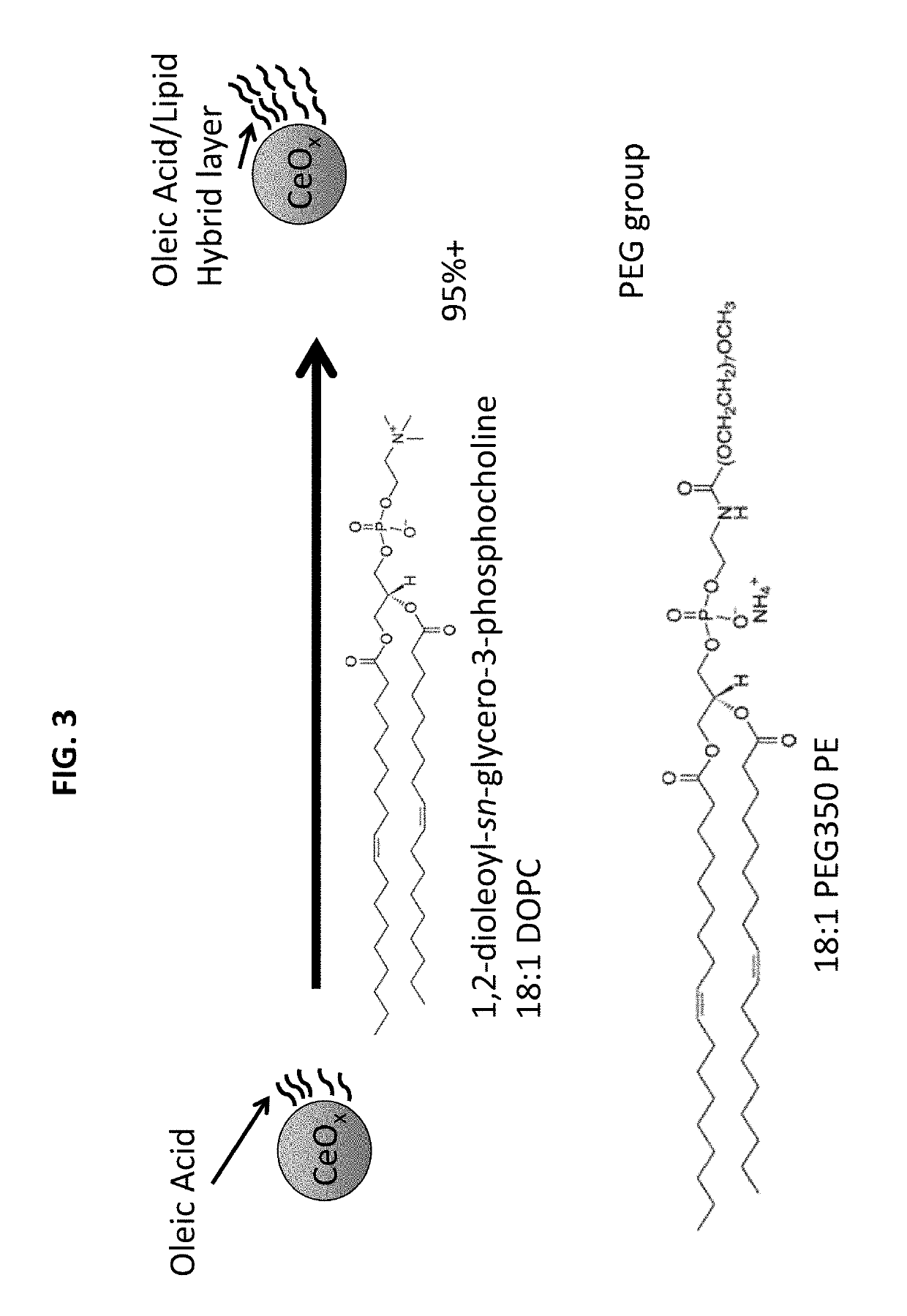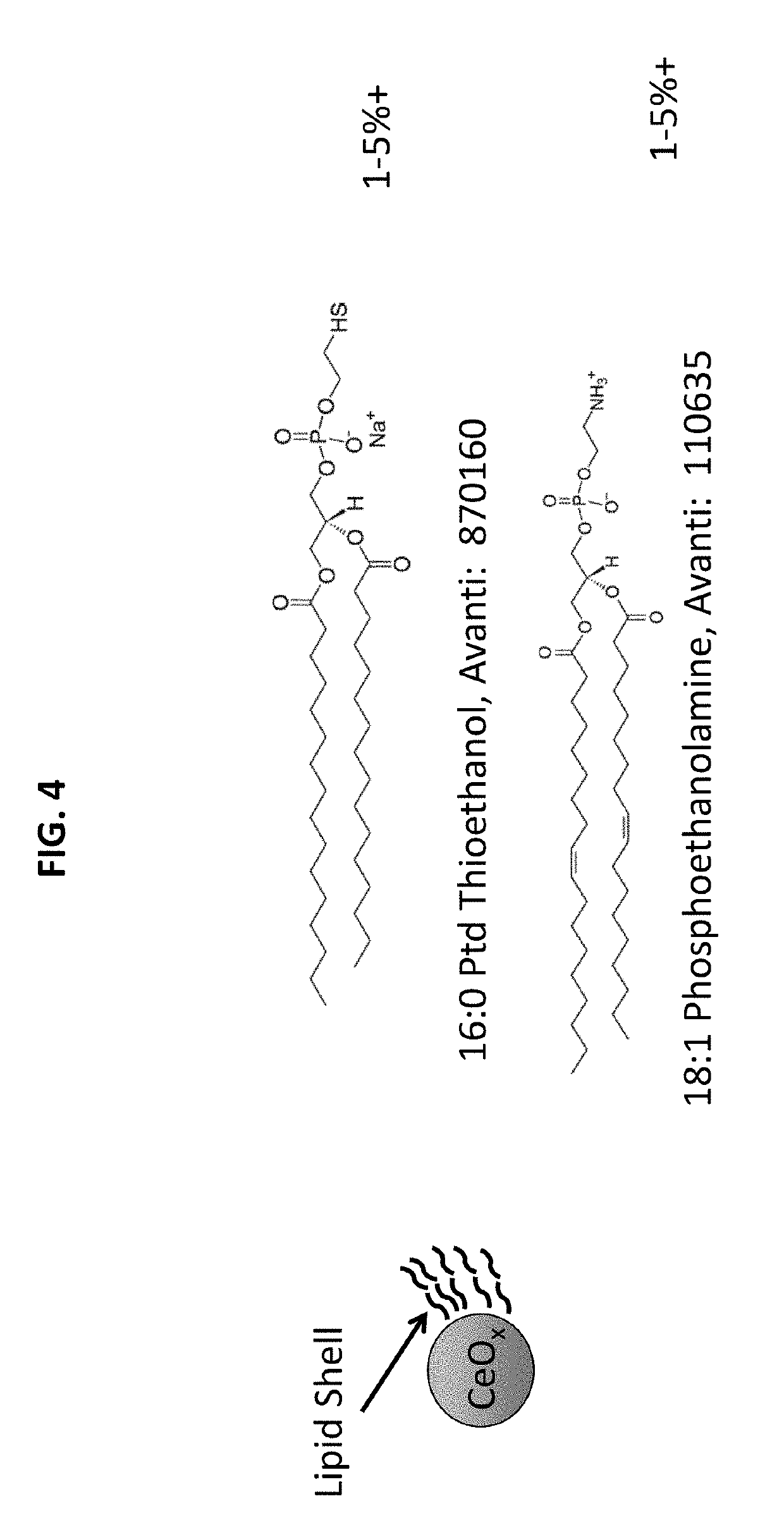Method of enhancing the biodistribution and tissue targeting properties of therapeutic ceco2 particles via nano-encapsulation and coating
a technology of ceco2 particles and nano-encapsulation, which is applied in the field of nano-encapsulation and coating, can solve the problems of overwhelming the body's antioxidant defenses, affecting the survival of patients, so as to maximize the biocompatibility of potent antioxidants and enhance the anti-oxidative activity of particles, the effect of increasing the target cell penetration and uptak
- Summary
- Abstract
- Description
- Claims
- Application Information
AI Technical Summary
Benefits of technology
Problems solved by technology
Method used
Image
Examples
Embodiment Construction
[0041]The invention summarized above may be better understood by referring to the following description. This description of an embodiment, set out below to enable one to practice an implementation of the invention, is not intended to limit the preferred embodiment, but to serve as a particular example thereof. Those skilled in the art should appreciate that they may readily use the conception and specific embodiments disclosed as a basis for modifying or designing other methods and systems for carrying out the same purposes of the present invention. Those skilled in the art should also realize that such equivalent assemblies do not depart from the spirit and scope of the invention in its broadest form.
[0042]In one embodiment, the present invention enhances tissue targeting and activation of a durable, regenerative catalytic agent that reduces ROS levels, especially peroxynitrite (ONOO−)—the most potent and persistent antioxidant in the human body—and delivers the agent to the sites...
PUM
 Login to View More
Login to View More Abstract
Description
Claims
Application Information
 Login to View More
Login to View More - R&D
- Intellectual Property
- Life Sciences
- Materials
- Tech Scout
- Unparalleled Data Quality
- Higher Quality Content
- 60% Fewer Hallucinations
Browse by: Latest US Patents, China's latest patents, Technical Efficacy Thesaurus, Application Domain, Technology Topic, Popular Technical Reports.
© 2025 PatSnap. All rights reserved.Legal|Privacy policy|Modern Slavery Act Transparency Statement|Sitemap|About US| Contact US: help@patsnap.com



